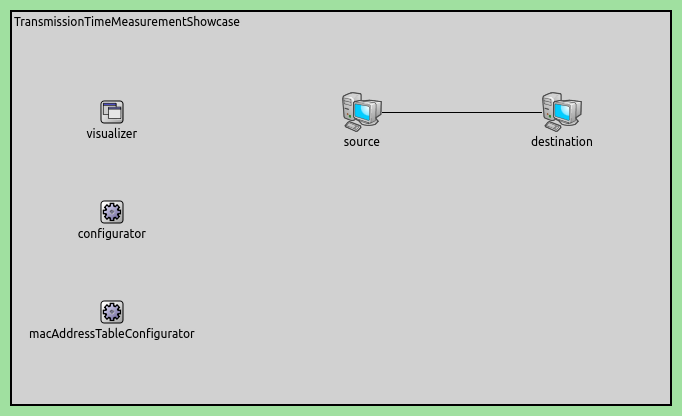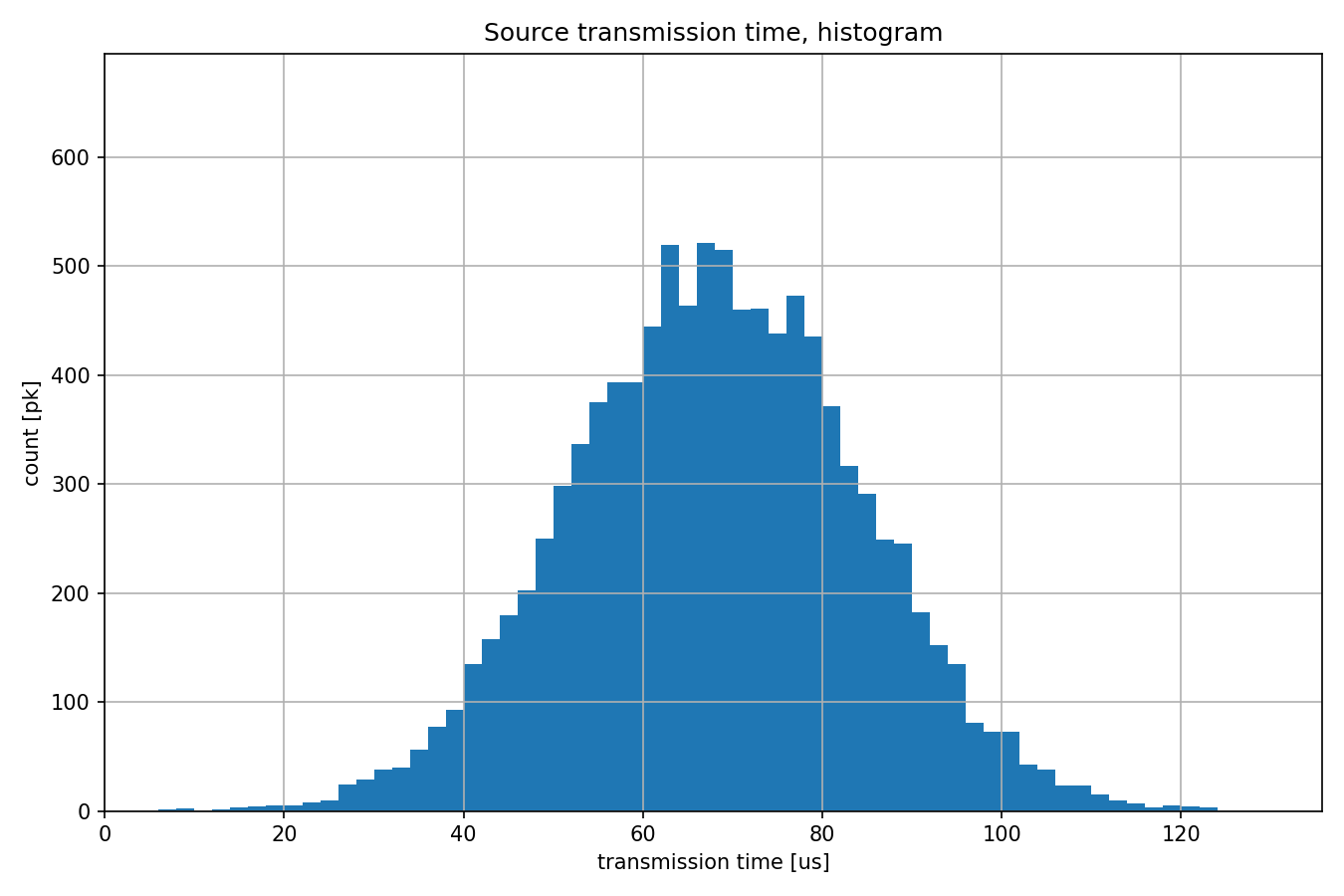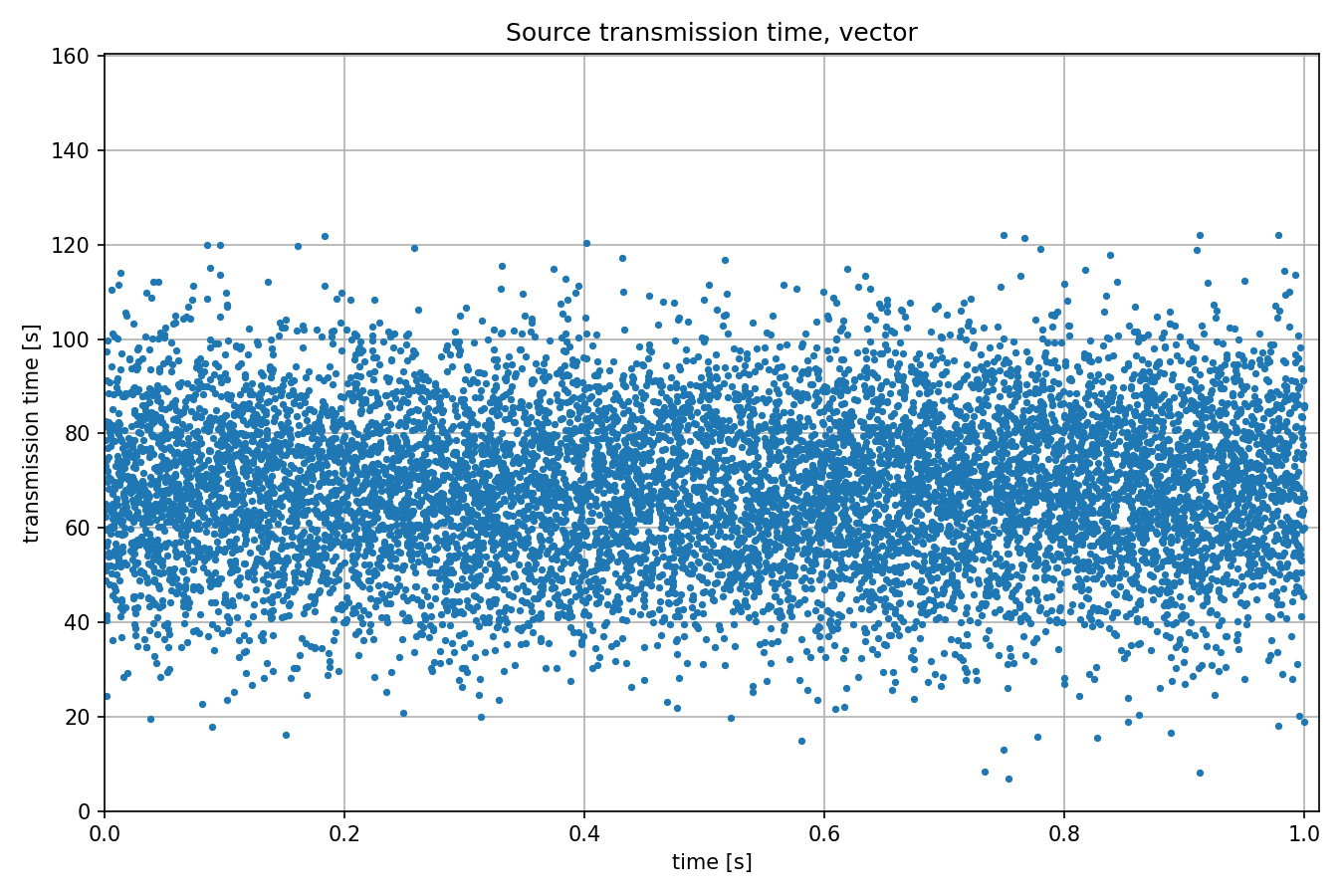Measuring Transmission Time¶
Goals¶
In this example we explore the packet transmission time statistics of network interfaces for wired and wireless transmission mediums.
4.4The Model¶
The packet transmission time is measured from the moment the beginning of the physical signal encoding the packet leaves the network interface up to the moment the end of the same physical signal leaves the same network interface. This time usually equals with the packet reception time that is measured at the receiver network interface from the beginning to the end of the physical signal. The exception would be when the receiver is moving relative to the transmitter with a relatively high speed compared to the propagation speed of the physical signal, but it is rarely the case in communication network simulation.
Packet transmission time is measured from the beginning of the physical signal encoding the packet leaves the network interface up to the moment the end of the same physical signal leaves the same network interface.
Packet transmission time is the time difference between the start and th end of the physical signal transmission on the outgoing interface.
Here is the network:

Here is the configuration:
[General]
network = TransmissionTimeMeasurementShowcase
description = "Measure packet transmission time on the channel"
sim-time-limit = 1s
# source application ~96Mbps throughput
*.source.numApps = 1
*.source.app[0].typename = "UdpSourceApp"
*.source.app[0].source.packetLength = int(truncnormal(800B, 200B))
*.source.app[0].source.productionInterval = exponential(100us)
*.source.app[0].io.destAddress = "destination"
*.source.app[0].io.destPort = 1000
# destination application
*.destination.numApps = 1
*.destination.app[0].typename = "UdpSinkApp"
*.destination.app[0].io.localPort = 1000
# enable modular Ethernet model
*.*.ethernet.typename = "EthernetLayer"
*.*.eth[*].typename = "LayeredEthernetInterface"
# data rate of all network interfaces
*.*.eth[*].bitrate = 100Mbps
Try It Yourself¶
If you already have INET and OMNeT++ installed, start the IDE by typing
omnetpp, import the INET project into the IDE, then navigate to the
inet/showcases/measurement/transmissiontime folder in the Project Explorer. There, you can view
and edit the showcase files, run simulations, and analyze results.
Otherwise, there is an easy way to install INET and OMNeT++ using opp_env, and run the simulation interactively.
Ensure that opp_env is installed on your system, then execute:
$ opp_env run inet-4.4 --init -w inet-workspace --install --chdir \
-c 'cd inet-4.4.*/showcases/measurement/transmissiontime && inet'
This command creates an inet-workspace directory, installs the appropriate
versions of INET and OMNeT++ within it, and launches the inet command in the
showcase directory for interactive simulation.
Alternatively, for a more hands-on experience, you can first set up the workspace and then open an interactive shell:
$ opp_env install --init -w inet-workspace inet-4.4
$ cd inet-workspace
$ opp_env shell
Inside the shell, start the IDE by typing omnetpp, import the INET project,
then start exploring.

